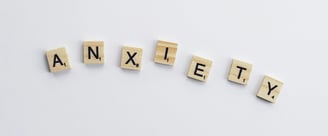
Reducing Worry and Embracing Joy
By recognizing and categorizing our worries, we can take action on what’s within our control and release what isn’t, reducing worry and creating more mental freedom and peace. This simple shift allows us to fully embrace joy, stay present, and live a more fulfilling, worry-free life.
HAPPINESS
2/23/20254 min read


Have you ever noticed that when things are going really well in life, a sudden wave of worry or doubt rushes in, killing the joy of the moment? It’s almost as if your mind is trying to sabotage your happiness, pulling you back into a state of unease. If this sounds familiar, you’re not alone. This phenomenon is beautifully explained in The Big Leap by Gay Hendricks, where he introduces the idea that much of the worry we experience is unnecessary—nothing more than a mental mechanism preventing us from fully enjoying life’s most beautiful moments.
Understanding the Nature of Worry
Worry, in its essence, is a survival mechanism. It helps us anticipate potential dangers, make sound decisions, and navigate life responsibly. However, when worry becomes excessive and unwarranted, it shifts from being a useful tool to a mental and emotional burden. The key is learning to differentiate between helpful and harmful worry.


Consider the overprotective mother who constantly projects her fears onto her children. Her worries don’t necessarily stem from real, immediate threats but from an internal lack of control over her emotions. This kind of worry is not serving her or her children—it’s simply draining her energy and affecting the quality of their experiences. We’ve all had moments where we become that worried momma, unable to release unnecessary concerns. But what if there were a simple way to mentally divide our worries, making them easier to manage and ultimately freeing us from their weight?
A Two-Step Process to Free Yourself from Unnecessary Worry
There is an easy and effective way to categorize worries, making them more manageable:
Recognize the worry. The first step is self-awareness. When you notice yourself worrying, pause and acknowledge it. Ask yourself: What am I actually worried about? Is it a real problem that requires action, or is it just an intrusive thought?
Decide if you can do something about it. Once you’ve identified the worry, determine whether it’s something within your control.
If you can do something about it, take action. Problem-solving is an effective way to reduce worry because it shifts your focus from anxiety to resolution.
If you cannot do anything about it, let it go. The Big Leap suggests that around 90% of our worries are about things completely outside our control. If you recognize that your concern falls into this category, consciously remove it from your worry list. Accept that no amount of overthinking will change the outcome, and instead, direct your energy toward being fully present in the moment.
Reducing Worry and Embracing Joy
Useful Worry vs. Excessive Worry
Useful Worry: This type of worry is productive. It leads to action, encourages problem-solving, and helps prevent negative outcomes. For example, worrying about an upcoming work presentation might push you to prepare more thoroughly, increasing your chances of success.
Excessive Worry: This form of worry is paralyzing. It focuses on hypothetical scenarios, many of which will never happen. Instead of leading to action, it creates stress, drains energy, and diminishes the quality of your life experiences.


Practical Strategies to Reduce Worry
Beyond simply recognizing and categorizing your worries, you can actively work on reducing them through daily practices. Here are some effective strategies:
1. Practice Mindfulness
Being present in the moment reduces unnecessary worry. Engage in mindfulness techniques such as meditation, deep breathing, or simply focusing on your surroundings to shift your mind away from anxious thoughts.


2. Reframe Your Thoughts
Instead of catastrophizing, ask yourself: What’s the best that could happen? This simple shift in perspective can help break the cycle of negative thinking and allow you to focus on positive outcomes.
3. Limit Exposure to Negative Influences
Constant exposure to negative news, social media comparisons, or fear-based conversations can heighten unnecessary worry. Be mindful of the content you consume and set boundaries where needed.
4. Establish a “Worry Time”
If worries constantly intrude on your day, schedule a specific time for them. Set aside 10-15 minutes to acknowledge and process your concerns, then move on. This helps prevent worry from taking over your entire day.
5. Take Action Where Possible
For worries that fall within your control, taking small, proactive steps can significantly ease anxiety. Make a plan, break it down into manageable actions, and work toward resolution.
The Liberation of Letting Go
When you drop unnecessary worries, an incredible transformation happens. The heavy mental burden that was weighing you down lifts, and suddenly, you are free to experience joy, success, and fulfillment without the constant interference of doubt and fear. You become more present, more engaged, and more at peace.
Life is full of incredible moments—big and small—that deserve our full attention and appreciation. Don’t let unnecessary worry steal those moments from you. Instead, practice awareness, take action where you can, and release what you can’t control. In doing so, you’ll create space for more happiness, gratitude, and success in your life.
If this resonates with you and you’d like to explore these ideas further, I’d love to connect! Feel free to reach out and share your thoughts or experiences—I’d be happy to chat and support you on your journey to a worry-free life.
